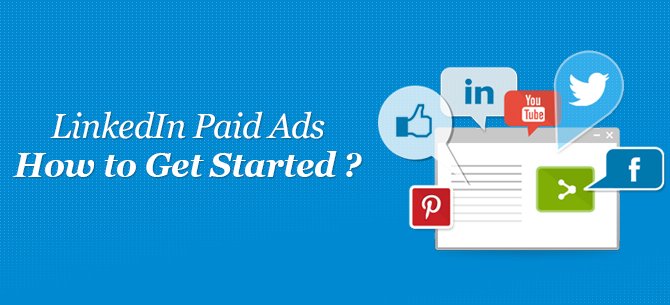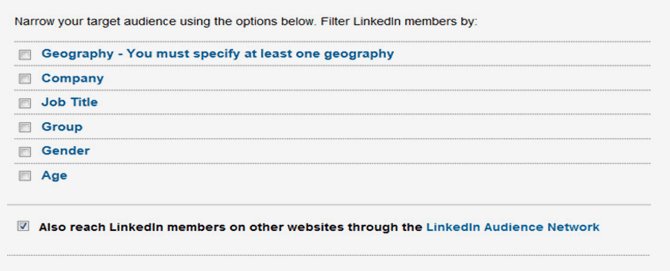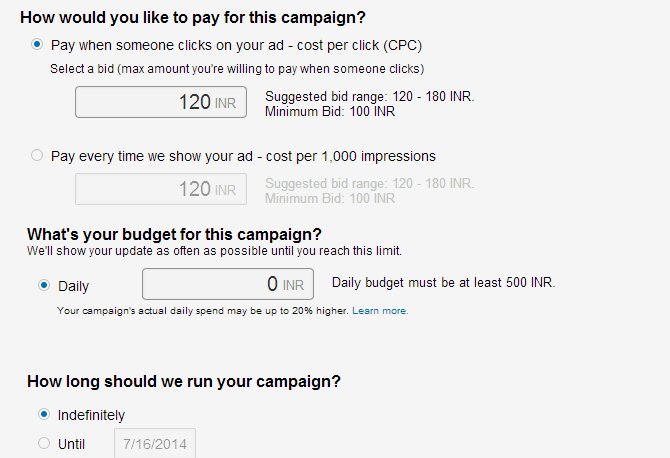Our Offices
USA OFFICE
937, Shore Point Court, # G313,
Alameda - 94501, California, USA.
INDIA OFFICE
C - 81C, Sector - 8,
Noida 201301, UP

 If you are looking for highly-targeted advertisement platform that provides marketers great opportunity to promote their business, then LinkedIn is the best choice for you. With more than 300 million users and counting, LinkedIn is a flourishing and popular social media platform for business professionals worldwide. LinkedIn’s self-service ad platform often gets overlooked by today’s media planners and marketers, but following amazing statistics and facts is evidence of popularity of LinkedIn:
If you are looking for highly-targeted advertisement platform that provides marketers great opportunity to promote their business, then LinkedIn is the best choice for you. With more than 300 million users and counting, LinkedIn is a flourishing and popular social media platform for business professionals worldwide. LinkedIn’s self-service ad platform often gets overlooked by today’s media planners and marketers, but following amazing statistics and facts is evidence of popularity of LinkedIn:
These amazing statistics shows that advertising on this social media platform can be an extremely important and effective way to create brand awareness and attract potential customers to website. In addition to this LinkedIn helps you to achieve a very precise reach due to following two factors:
Now, one question might be popping in your mind that is LinkedIn right for me, how can I create and measure effectiveness of LinkedIn ad campaign and what are the tips of perfect ad campaign? This article will give elaborative answer of these questions and it is a complete guide for those who want to make their LinkedIn ad campaign a great success. Let’s begin.
Before advertising on LinkedIn, you should figure out if this platform would be a good fit for your needs. LinkedIn allows marketers to target ads to users by B2B demographics, therefore, for effective advertising you should have answer of at-least one of the following questions:
If you can answer “yes” to any of these questions, LinkedIn ads are the right choice for you.
LinkedIn ads are different from standard AdWords ads, as they have a photo. Following image shows an example of LinkedIn ad:  1) Ad Headline- Your ad headline should be punchy and less than 25 characters. Using the ad title of the people you are targeting can be effective. 2) Ad description- Ad description should not be more than 75 characters and should clearly describe the purpose of your ad. 3) Destination URL- It is a landing page which should be tailored for LinkedIn members. 4) Photo- Choose a photo that draws the eyes of your target audience. Photos of people are better and using the title of people you are targeting can be quite effective.
1) Ad Headline- Your ad headline should be punchy and less than 25 characters. Using the ad title of the people you are targeting can be effective. 2) Ad description- Ad description should not be more than 75 characters and should clearly describe the purpose of your ad. 3) Destination URL- It is a landing page which should be tailored for LinkedIn members. 4) Photo- Choose a photo that draws the eyes of your target audience. Photos of people are better and using the title of people you are targeting can be quite effective.
While advertising on LinkedIn, you should remember that creatively designed ads for the right products and services can sell very well, whereas poorly designed ads may generate lots of the wrong clicks for you. In order to create an ad campaign on LinkedIn, you will need the following:
Go to the LinkedIn Ads login page and click “Get started”, which presents two types of campaign options:
Sponsor Content  Here, you can choose “Create an ad” or “Sponsor content”. Let’s look at what makes them different. Create an Ad- If you have a LinkedIn account, you can start or manage an ad campaign with “Create an ad”. Sponsor Content- Sponsored updates allow marketers to raise awareness, as well as build relationships and drive quality leads. With the help of “Sponsor Content”, you can sponsor existing or new content to reach a wider audience. These updates appear in the homepage newsfeed of LinkedIn members who fit the targeting criteria set up by you.
Here, you can choose “Create an ad” or “Sponsor content”. Let’s look at what makes them different. Create an Ad- If you have a LinkedIn account, you can start or manage an ad campaign with “Create an ad”. Sponsor Content- Sponsored updates allow marketers to raise awareness, as well as build relationships and drive quality leads. With the help of “Sponsor Content”, you can sponsor existing or new content to reach a wider audience. These updates appear in the homepage newsfeed of LinkedIn members who fit the targeting criteria set up by you.
“Create an ad” and “Sponsor content” can both be effective ways to reach your target audience. Before choosing one, you should think about the goals of your LinkedIn Ads campaign. LinkedIn’s “Create an ad” can work in following scenarios:
On the other hand, LinkedIn’s “Sponsor Content” works well if your post regularly updates to your company page, which you can use for Sponsor content. Keep in mind that fresh, informative and up-to-date content is the key for successful Sponsor content. If you want to “Create an ad”, follow following steps: Step 1: Create Your Ad After clicking on “Create an ad” following screen will appear:  Here, you need to fill following information:
Here, you need to fill following information:
Step 2: Targeting After completing ad, now it’s time to focus on targeting. Some targeting options on this platform are quite similar to Facebook and Twitter, but in LinkedIn you can also target people by their job title, industry, employer, and even skills/ interests.  Let’s take a closer look at targeting options.
Let’s take a closer look at targeting options.
In addition to this, you can choose more targeting options like school, skill, group, gender, and age that will help you to target your audience more precisely. Step 3: Budgeting  After targeting, you can set up the payment method that works best for you. In LinkedIn, there are two options for pay-per-click advertising
After targeting, you can set up the payment method that works best for you. In LinkedIn, there are two options for pay-per-click advertising
If your goal is to get conversions, then you’ll most likely choose the Cost per click (CPC) option. If your goal is to increase visibility for your business, then you’ll most likely choose Pay per 1,000 impressions (CPM) option. You should know following concepts to understand LinkedIn ad budgeting:
LinkedIn ads appear on prominent LinkedIn.com pages to the people within your target audience. Up to two other ads may be shown on LinkedIn page alongside yours in each ad placement. Your ads are placed mainly on:
Your ads are seen by nearly everyone surfing LinkedIn and some of their partner websites. Partner websites, also called the LinkedIn Audience Network, are mostly high-end media websites, some of which are also part of Double-click exchange and ad network Collective Media. Some of their partners are:
It is quite important to define your overall advertising goals before launching your LinkedIn ad campaign. A clear goal will guide you in creating effective ads, targeting the right audience, and choosing the best destination landing page. For example: a) If your aim with LinkedIn ad is to generate clicks to your site at a certain cost per click, then use the Reporting tab and My Ad Campaigns tab in LinkedIn Ads to track your progress. Here, you can track the number of clicks you have received against your total budget you’ve spent on ad. b) If your aim is to generate leads, inquiries or sales that result from clicks you receive, then you need to track users’ actions on your site and attribute these actions to your ads on LinkedIn. You can do this by using reports from a website analytics tool. Free website analytics solutions such as Google Analytics can provide key insights such as total number of conversions (actions of visitors on your site) as well as conversion rate (the percent of visitors). With these measures you can estimate the number of clicks that you will need to achieve your business target. According to LinkedIn, good ads have click through rate greater than 0.025%. You should monitor the CTR frequently, and if you notice a drop, refresh the ads with new images or copy. In addition to this, you can narrow your target audience so that your ad is more relevant, which results in driving higher CTR. Effective tips for successful LinkedIn ad campaign
Subscription Implies Consent To Our privacy Policy
7 Reasons Why Internet Marketing Is Important For Your Business
The 10 Advantages of Using WordPress for Developing Business Website